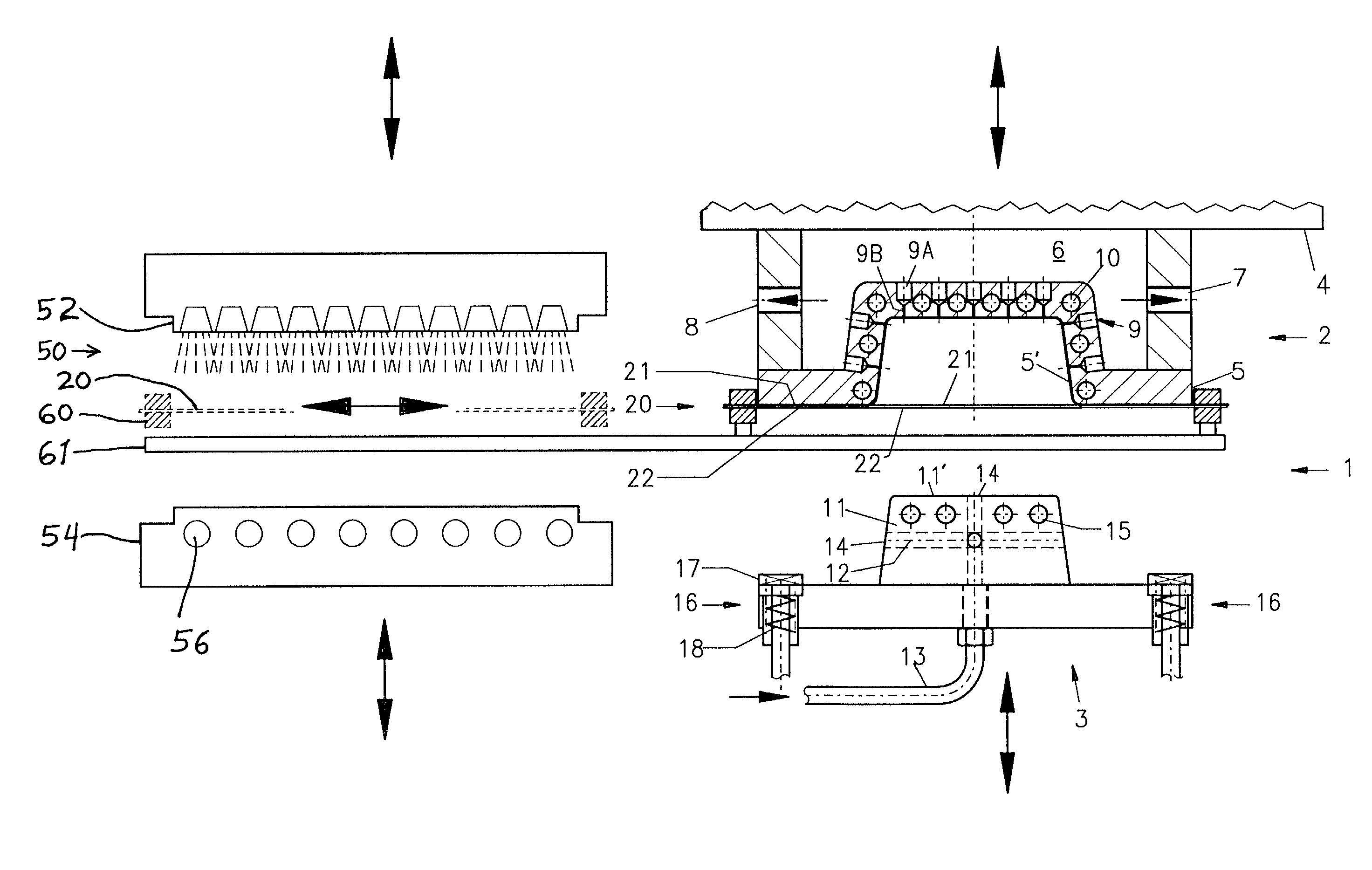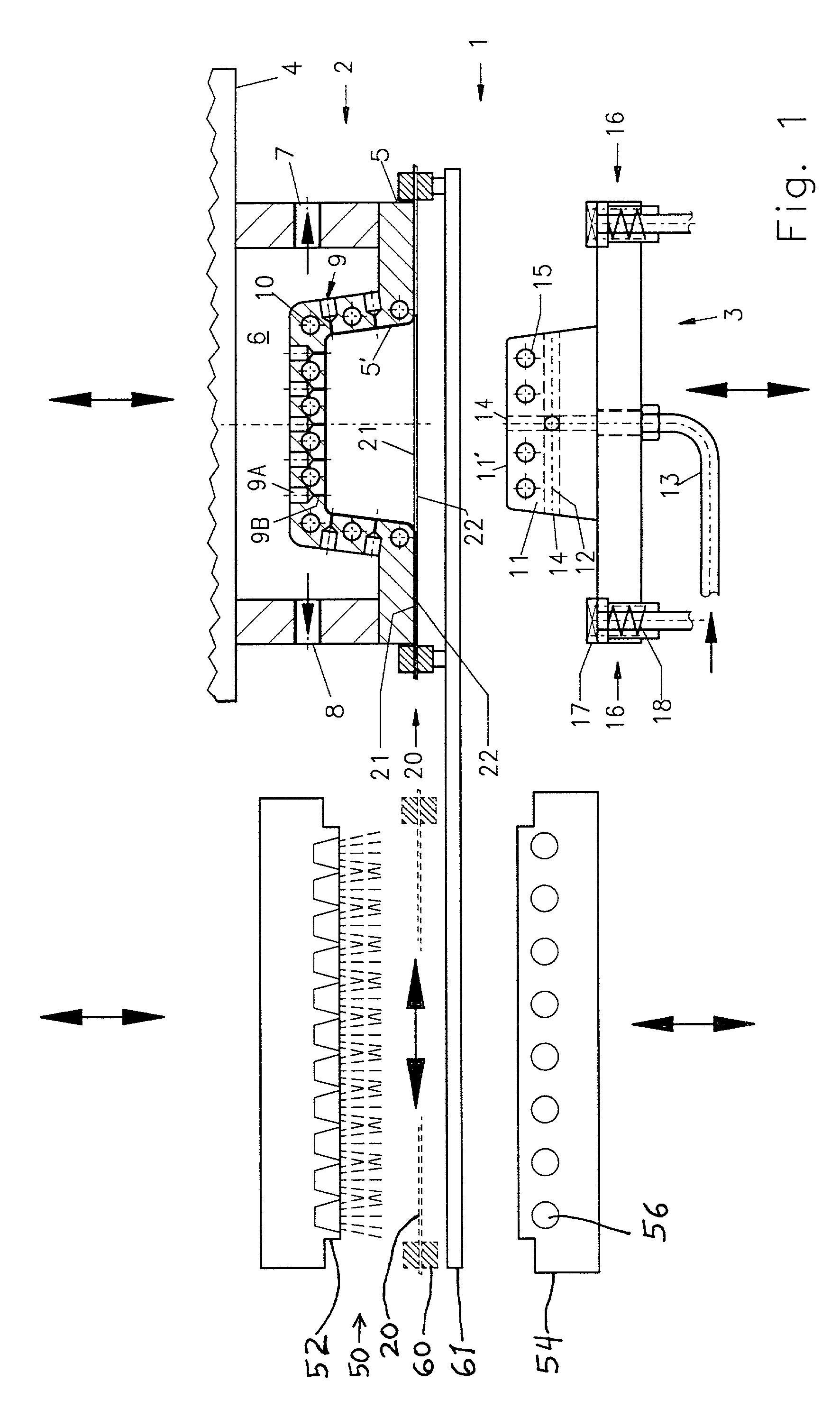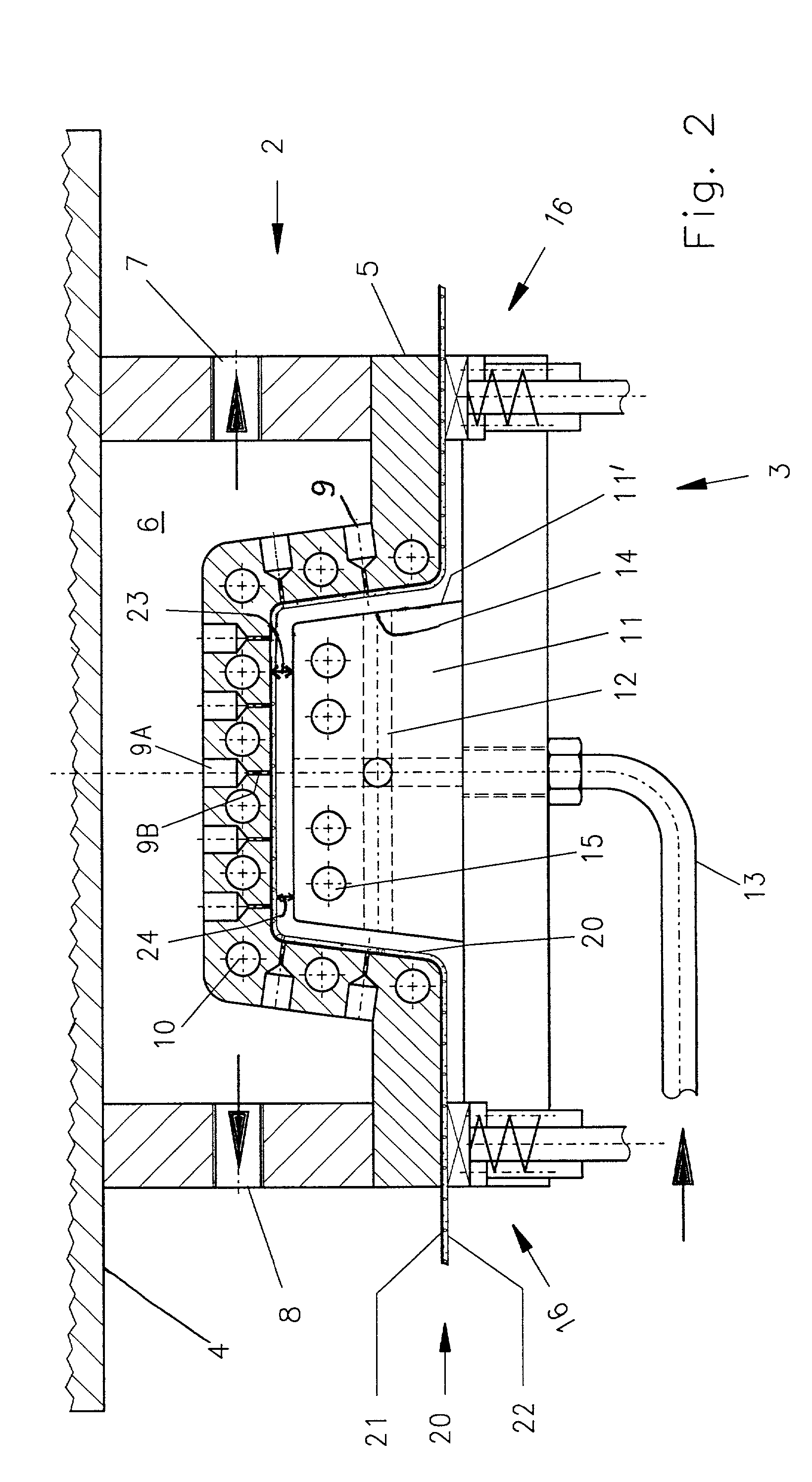Method and apparatus for molding components with molded-in surface texture
a technology of surface texture and molding method, applied in the field of automobile manufacturing industry, can solve the problems of visually unacceptable parts which must be scrapped, and high rejection and discard rate of such parts
- Summary
- Abstract
- Description
- Claims
- Application Information
AI Technical Summary
Problems solved by technology
Method used
Image
Examples
Embodiment Construction
[0026] FIG. 1 schematically shows a forming line according to the invention, including a heater arrangement 50 and a molding apparatus 1, as well as a cover sheet transfer carriage primarily including a clamp frame 60. The clamp frame 60 holds and carries a cover sheet 20 including a skin film 21 on a foam backing 22. The clamp frame 60 moves along transport rails 61 to thereby transport the cover sheet 20 into the heater arrangement 50, holds the cover sheet 20 while it is heated there, and then further moves along the rails 61 to transport the heated cover sheet into position in the molding apparatus 1.
[0027] The heater arrangement 50 in this embodiment preferably includes an infrared heater array 52 arranged above the plane of the clamp frame 60, and a tempering contact plate 54 arranged below the plane of the clamp frame 60. The tempering contact plate 54 is, for example, a metal plate 54 that is cooled by a cooling liquid flowing through coolant passages 56 therein. The heater ...
PUM
| Property | Measurement | Unit |
|---|---|---|
| atmospheric pressure | aaaaa | aaaaa |
| pressure | aaaaa | aaaaa |
| pressure | aaaaa | aaaaa |
Abstract
Description
Claims
Application Information
 Login to View More
Login to View More - R&D
- Intellectual Property
- Life Sciences
- Materials
- Tech Scout
- Unparalleled Data Quality
- Higher Quality Content
- 60% Fewer Hallucinations
Browse by: Latest US Patents, China's latest patents, Technical Efficacy Thesaurus, Application Domain, Technology Topic, Popular Technical Reports.
© 2025 PatSnap. All rights reserved.Legal|Privacy policy|Modern Slavery Act Transparency Statement|Sitemap|About US| Contact US: help@patsnap.com



